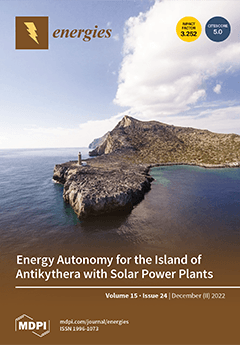Biomass is one of the most important sources of renewable energy in the energy industry. It is assumed that by 2050 the global energy deposit could be covered in 33–50% of biomass combustion. As with conventional fuels, the combustion of biomass produces combustion
[...] Read more.
Biomass is one of the most important sources of renewable energy in the energy industry. It is assumed that by 2050 the global energy deposit could be covered in 33–50% of biomass combustion. As with conventional fuels, the combustion of biomass produces combustion by-products, such as fly ash. Therefore, along with the growing interest in the use of biomass as a source of energy, the production of ash as a combustion by-product increases every year. It is estimated that approximately 476 million tons of ashes per year can be produced from biomass combustion. For example, the calorific value of dry wood mass tends to be between 18.5 MJ × kg
−1 and 19.5 MJ × kg
−1, while the ash content resulting from thermal treatment of wood is from 0.4 to 3.9% of dry fuel mass. However, biomass ash is a waste that is particularly difficult to characterize due to the large variability of the chemical composition depending on the biomass and combustion technology. In addition, this waste is, on the one hand, a valuable fertilizer component, as it contains significant amounts of nutrients, e.g., calcium (Ca), potassium (K) and microelements, but on the other hand, it may contain toxic compounds harmful to the environment, including heavy metals and substances formed as a result of combustion, such as polycyclic aromatic hydrocarbons (PAHs) or volatile organic compounds (VOCs). PAHs and VOCs are formed mainly in the processes of incomplete combustion of coal and wood in low-power boilers, with unstable operating conditions. However, it is important to remember that before the fly ash is used in various industries (e.g., zeolite synthesis, recovery of rare earth metals or plastic production) as an additive to building materials or fertilizers for cultivation, a number of analyses are to be conducted so that the by-products of combustion could be used to allow the by-product of combustion to be used. It is important to conduct tests for the content of heavy metals, chlorides, sulphates, microelements and macroelements, grain and phase composition and organic compounds. If such ash is characterized by low pollution levels, it should be used in agriculture and reclamation of degraded land and not directed to landfills where it loses its valuable properties. The purpose of this review is to present the properties of ashes generated as a result of biomass combustion in Poland and the world, to discuss factors influencing changes in its composition and to present the possibilities of their reuse in the environment and in various branches of industry.
Full article





